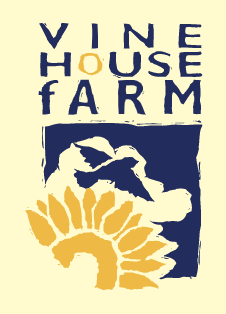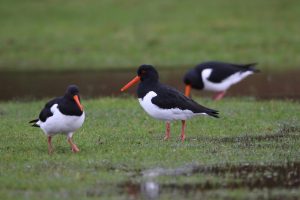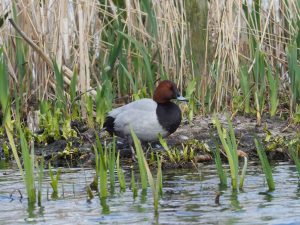
It has been a wet month, with over 3ins of rain or 78mm here on the farm. I know the rainfall has been very different in other areas, but that brings our rainfall for the year so far to 11.7ins or 296mm. Our average yearly rain so far is about 21ins or 530mm. Rainfall might be very variable from place to place, but not temperatures – October here has been our third warmest in the last 50 years, with only 2001 and 2006 being warmer. Next month I will be working out to see if 2022 is our warmest year.

We seldom get an ideal autumn; we need the ground to be moist enough for the seeds to grow but not get too wet so that the soil is sticky. Overall, it has been a bit too dry, especially for the potatoes. When the soil is dry, the clods are dry and the machinery used to separate the clods from the potatoes does not work very well. If we don’t separate the clods from the potatoes, the potatoes get damaged, so the sorting has to be done manually which slows us down, meaning we are now behind with our lifting. We aim to be finished by the end of October. The soil is now wet enough for the harvester to go at full speed after the 2ins of rain we received on the 21st to 23rd October, but we have been hampered by rain showers since then.
Frost and wet weather were the main reason for wanting to be finished by the end of October, now it is just wet weather. I can remember in the early 1960s when we had about three acres to finish in early November and it was too frosty to lift them. Normally, the further into the winter we go, the wetter the soil gets and we then damage the soil. This means the yield of the next crop starts to suffer, so it is best to finish before the end of October. We were a bit late starting our potato harvest this year because we wanted the potatoes to bulk up a bit more to give us more bakers. The packers and supermarkets all prefer a crop that has more bakers, and are therefore more saleable.
The last two years we have lost money on the potatoes that have been destined for the supermarket trade, as there has been over production of them. It only needs 10% surplus and the value halves and although the acreage grown this year has decreased, there still looked like there was going to be a surplus. This was until the hot dry weather of the summer took its toll on the growing crops and now the price is double what it was last year.
We keep getting a surplus of potatoes grown for the supermarkets, because they are selling less. Every year the manufacturing side of the potato trade needs more potatoes, as people are buying more French Fries, crisps and ready prepared products. Therefore, next year we will be growing more for the chip manufacturers than we have been doing. The varieties of potatoes grown for the retailers does not suit the chippers or the crispers, so we will have to grow specific varieties for them. What the public are going to buy must look attractive, the processors are not worried about looks, they want to know what is inside the potato.
The sunflower harvest was a good one, probably the best we have had, due to the sunshine in August. The fields that were sunflowers were drilled within a week with wheat, which is now just coming through the ground. Rooks are very busy on the fields sniffing out the sunflower seeds we didn’t manage to harvest.


Winter visitors have started to arrive on the farm. On October 20th, I saw a group of nine Whooper Swans feeding on maize stubbles and the next day I was in a cider apple orchard in Herefordshire and Fieldfares were arriving. It was a sunny morning, and they were dropping down from high in the sky to feed on the apples; it was an amazing sight, 200 or 300 of them. These birds had overflown us in the eastern counties where all we have to offer is hawthorn berries. I had witnessed Fieldfares and Redwings in Herefordshire a few years ago before they were on our farm, so it reinforced my belief that birds are very good at remembering food sources, after all they do spend most of their life looking for food. The sight of seeing them dropping high out of the clear blue sky to me was amazing. The next day, I saw a group of 15 Fieldfares on the farm here in Lincolnshire.
Winter visitors have of course been arriving for a few months now, the first Green Sandpipers arrived on our wetland in early July and of course huge numbers of other wading birds have been arriving on our coasts
The first Pink Footed Geese were seen on the Norfolk coast on September 12th. I had a few days in Scotland during the middle of September and I went to one of my favourite bird watching spots, the Montrose basin. They said the first Pink Footed Geese arrived there on September 13th, again proof that birds are very good at remembering food sources.
It is not good news for those early arrivals, however, they are the birds that failed to rear any young. Those that have reared young wait until all the family are strong enough to make that journey over the sea. The geese and Swans will stay in family parties all through the winter and fly back to their breeding grounds as a family party. Not so with the young Cuckoo of course, who will never see its true parents. Every species has evolved its way of living and I find it so interesting to learn all about those different ways.
I’ve seen very few birds on the farm for the past six weeks; all the summer visitors had left by mid-September and many of our resident birds were in hiding. This was because they were moulting and when you are moulting your flight feathers, you are not able to fly as fast as usual and are at risk of being caught by a Sparrowhawk. Our smaller birds moult all of their feathers in about a month; they need to as they’ve worn them for about a year, so some are getting worn out. I wish I had a coat like they have – one that is waterproof, not too cold in the winter and not too warm in the summer.
Sparrowhawks and other birds of prey only moult one flight feather each side of the wing at a time. This is so that they can still fly fast enough to catch their prey – nature has life worked out far better than our politicians have.
Over the past week birds have been flooding on to the farm and we now have 3,000 Lapwings, 500 Golden Plover, 2,000 Starlings and 500 Whooper Swans on nearby farms. Will numbers still increase? Only time will tell.



